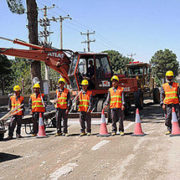Archive | Economics RSS feed for this section
Economics, Finance sector development, Governance and public sector management
 Economics, Education, Finance sector development
Economics, Education, Finance sector development
 Economics, Finance sector development, Governance and public sector management
Economics, Finance sector development, Governance and public sector management
 Economics, Education, Governance and public sector management, Poverty
Economics, Education, Governance and public sector management, Poverty
 Economics, Finance sector development, Governance and public sector management
Economics, Finance sector development, Governance and public sector management
 Economics, Finance sector development, Governance and public sector management
Economics, Finance sector development, Governance and public sector management
 Economics
Economics
 Economics, Education
Economics, Education
 Economics
Economics
 Economics
Economics

Escaping the middle income trap: Innovate or perish

The “middle income trap” captures the situation where a middle income country can no longer compete internationally in standardized, labor-intensive commodities because wages are relatively too high, and it can also not compete in higher value added activities on a broad enough scale because productivity is relatively too low. The result is slow growth, stagnant or falling wages, and a growing informal economy.
Hometown investment trust funds: A sustainable solution for financing green energy projects

The Fukushima Daiichi nuclear disaster was an energy accident at the Fukushima No. 1 Nuclear Power Plant in Fukushima, Japan, initiated primarily by the tsunami that followed the Tohoku earthquake on 11 March 2011 and led to a nuclear shutdown in the country. Japan substituted the loss of nuclear power with fossil fuels, such as oil, gas, and coal, and became more dependent on their imports and consumption.
Assessing the BOJ’s yield curve control policy

The Bank of Japan (BOJ) announced in September last year that it would be switching the focus of its quantitative easing program from monetary base targeting to controlling the shape of the yield curve (Bank of Japan, 2016). A brief comparison of the two frameworks is as follows. The previous monetary easing framework, Quantitative and Qualitative Monetary Easing (QQE) with a Negative Interest Rate, set out three policy dimensions: quantity, quality, and interest rates.
Why is Income Distributed Unequally? A Comparison of Japan and the United States

Japan and the United States (US) are at similar levels of economic development, yet their income distributions are considerably different. Whereas Japan has a relatively equal income distribution, the US is marked by a high level of income inequality. What are the sources of income inequality in both countries? Our latest research aims to uncover the sources on income inequality in both countries by exploiting detailed household panel survey.
Ultra-low interest rates and wandering overinvestment cycles in East Asia

In the 1960s, Kaname Akamatsu (1961) described the gradual relocation of industries from the advanced industrialized countries in East Asia to the less advanced countries during the latter’s economic catch-up process as the “flying geese” pattern. For instance, the textile industry was clustered in Japan in the 1950s but then successively relocated to the newly industrialized economies (Hong Kong, China; Taipei,China; Singapore; and the Republic of Korea), the new generation of tiger countries (Indonesia, Malaysia, the Philippines, and Thailand), the People’s Republic of China (PRC), and now increasingly to Viet Nam.
The brief for cash

Cash is an extremely useful social contrivance. Two possible drawbacks of high-denomination cash have recently been discussed by Kenneth Rogoff (2016) in his book, The Curse of Cash, and echoed by other economists. They are the extensive use of high-denomination cash by criminals and others engaged in illicit and corrupt activities, and the role that cash plays in avoiding deeply negative nominal interest rates imposed on bank accounts. Rogoff and others call for a phasing-out of high denomination cash over a long period.
Market failure or low-skills equilibrium?

As we know from countless growth accounting studies, the ability of a country to educate and train its citizens is a key determinant of economic development. There is also fairly strong evidence at the company level that a workforce with higher human capital generates higher productivity. In other words, not only are there strong incentives for governments to educate and train people, but there are also incentives at the firm level for companies to hire more educated workers and to offer training to their existing workers.
Benefits of education and training for SMEs in Asia

The importance of small and medium-sized enterprises (SMEs) to economies in Asia is well known. They account for over 95% of all businesses, a third to half of aggregate output, and the majority of enterprise employment (Vandenberg, Chantapacdepong, and Yoshino 2016). We also know that SMEs do not have an easy life. They struggle to get established, face a higher failure rate than large firms, and lack access to key inputs such as finance. Finding ways to increase their survival rate and growth is important for expanding private sector activity in Asia’s developing economies. Sustaining enterprises requires that they are competitive; competitiveness, in turn, is based on productivity.
Are financial statements effective in evaluating the creditworthiness of small and medium-sized enterprises?

The credit risk database (CRD) was established in March 2001 as a membership organization to collect financial statements, some nonfinancial information, and default information of small and medium-sized enterprises (SMEs) in Japan. CRD members are composed of all credit guarantee corporations (CGCs) in Japan, government-affiliated or private financial institutions, and so on.
Rethinking the small and medium-sized enterprise financing model and the role of commercial banks

At a time of much global uncertainty and economic slowdown, building internal resiliency is becoming increasingly important. Small and medium-sized enterprises (SMEs) play a central part in this, via its role in enhancing economic dynamism and creating employment opportunities in a country. SMEs usually make up a huge proportion of all businesses around the world. In Thailand, they account for as much as 99.7% of all enterprises, hire 80.3% of total labor force, and contribute 26.3% of export value.


Search
Subscribe / Connect to Asia Pathways
Subjects
- Agriculture and natural resources
- Blog
- Capacity development
- Climate change
- Economics
- Education
- Energy
- Environment
- Finance sector development
- Gender
- Governance and public sector management
- Health
- Industry and trade
- Information and Communications Technology
- Infrastructure
- Miscellaneous
- Population
- Poverty
- Private sector development
- Regional cooperation and integration
- Sanitation
- Social development and protection
- Transport
- Uncategorized
- Urban development
- Video Blog
- Water
Recent Posts
- Artificial intelligence: A new driver for inclusive growth and development?
- Increasing trust in cross-border e-commerce and artificial intelligence
- Enhancing access to maternal and newborn healthcare in developing Asia
- Can electric vehicles lead the way to a sustainable future?
- Mitigating climate-related sovereign risk to accelerate action on the climate emergency




Recent Comments